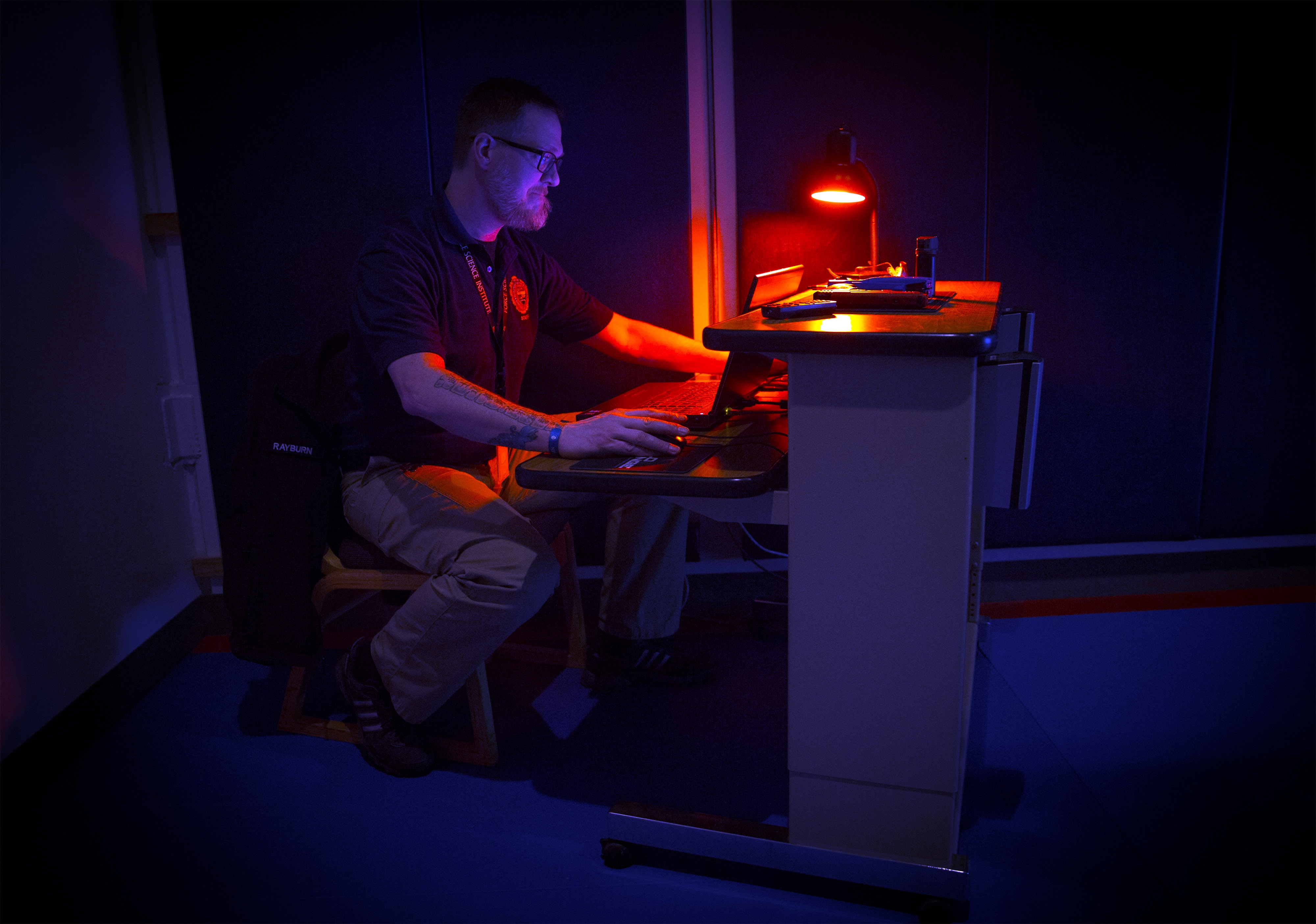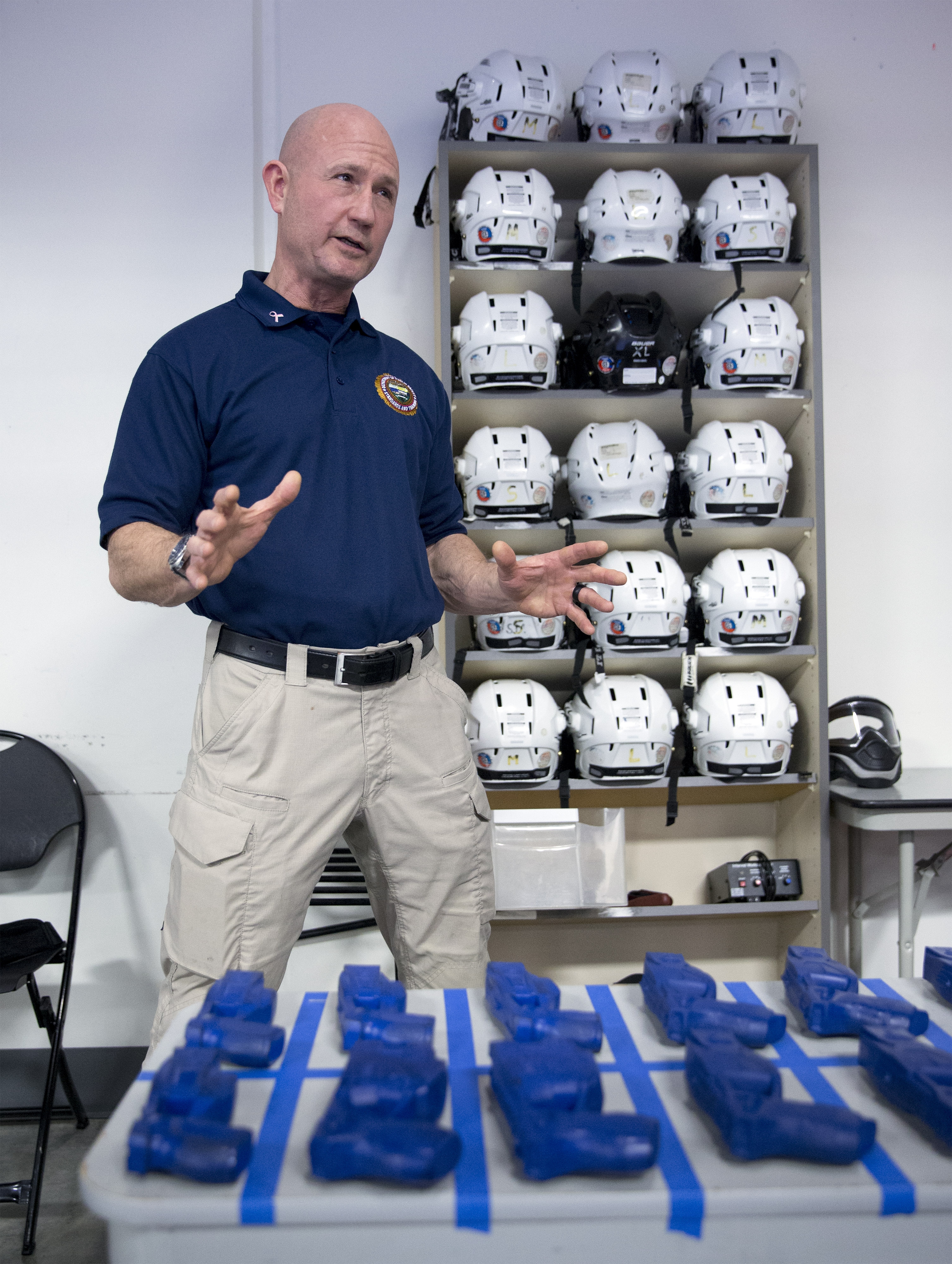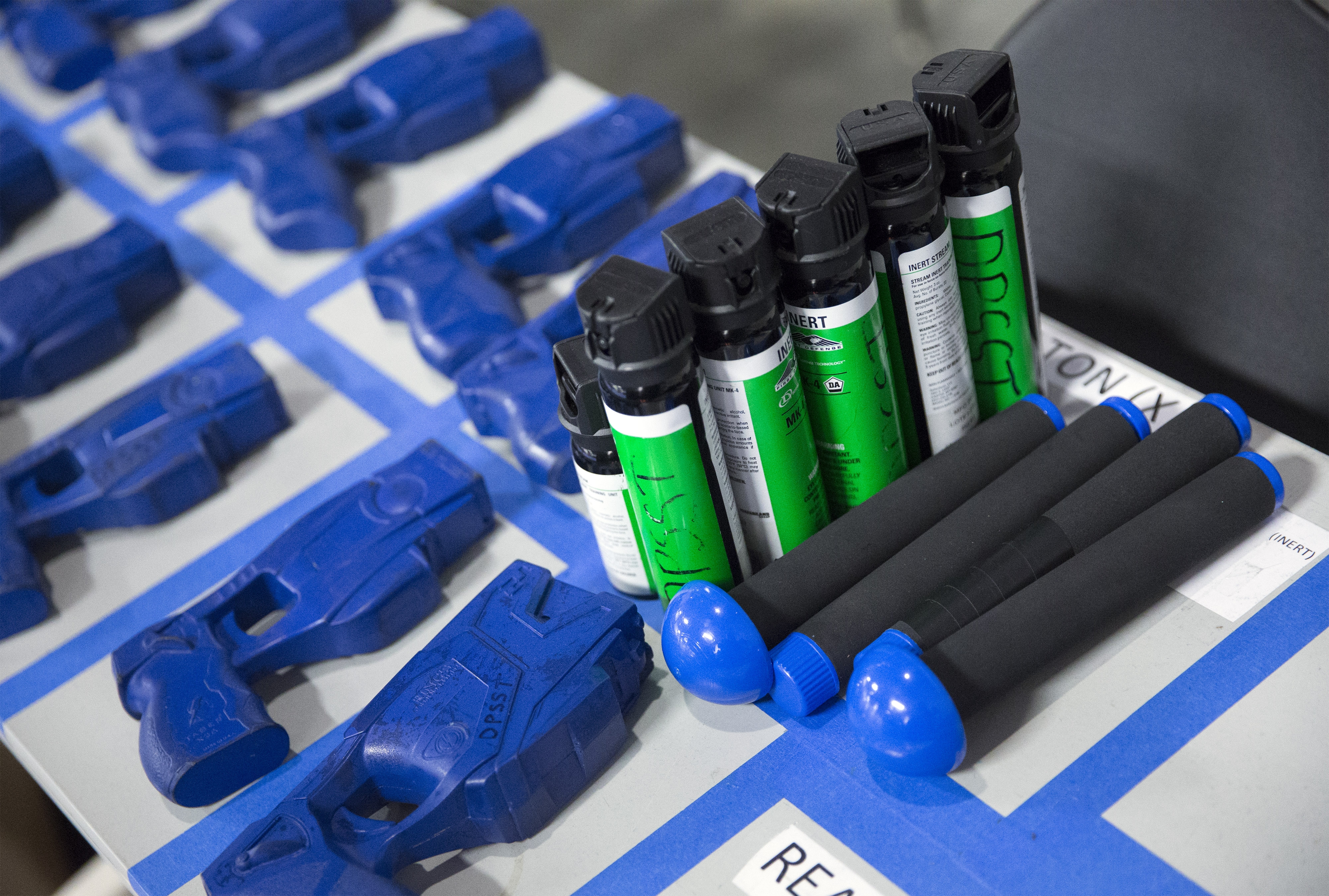
New officer training builds a foundation for communication and use of force
Springfield police Sgt. David Lewis remembers the day he shot a man who died.
"I think about it. I'm not proud of it, I'm not ashamed of it," Lewis said. "But it's one of those unfortunate things that had to happen."
Former Portland police officer Mike Stradley does, too. His suspect was attempting suicide by cop but survived.
"The shooting was pretty simple. The guy made me shoot him. I shot him," Stradley said. "I wasn't angry at him. He didn't die, which was nice for me. The interesting thing about that one is that although I wasn't terribly impacted by that event, my oldest son at the time was 10, he was horribly impacted. Every time he heard the word, 'police' on the radio, he thought I'd been involved in another shooting."
"I met the man I shot again a number of years later. He introduced me to his son. He told his son, 'It wasn't his fault. I made him shoot me.' It was a really interesting deal."

Stradley, who now works for the Department of Public Safety Standards and Training police academy, and Lewis, who has been a Springfield police officer for 35 years, are just two examples of police officers forced to make split-second decisions daily about using force that potentially saved their lives or the lives of others.
Officers often are scrutinized for using force, defined as an act by an officer that seeks to gain compliance in interactions with a suspect who may struggle or pose a threat. Use of force can be anything from a wrist hold to a choke hold, the use of a Taser to a use of a gun.
Locally, each use of deadly force incident is investigated by a county task force and then the district attorney rules whether a shooting is justified.
By both state and federal law, an officer is justified in using deadly force against another person if the deadly force is immediately necessary to protect them or others from what he or she reasonably believes would be an imminent threat of death or serious injury; or to arrest or prevent escape of a suspect when the officer has probable cause to believe the suspect has committed or intends to commit a felony involving the inflection of serious physical injury or death, and the officer reasonably believes that there is a an imminent or potential risk of serious physical injury or death to others if the suspect is not immediately apprehended.
In 2018, there were 995 people shot and killed by police nationwide, according to The Washington Post. That's slightly higher than the years before, when the number was 987 in 2017 and 963 in 2016. In Oregon, The Washington Post identifies 17 people shot and killed by law enforcement in 2018. However, that data appears to leave out Joey Loop, shot and killed by a Lane County Sheriff's deputy at a marijuana grow in Cottage Grove in July 2018. In total, there were four officer-involved shootings in Lane County in 2018 with two fatalities. In 2017, there were three and there were none in 2016, according to the Lane County District Attorney.
Of the 995 people shot and killed by police nationwide, 41 of those were reportedly unarmed.
But according to Jon Shane, a national expert on use of force and a professor at the John Jay College of Criminal Justice, "just because a person is unarmed does not mean that they are not dangerous."
In his recently published work, Shane looked at two years worth of data across the country and found that the unarmed people shot by police were generally in the process of attacking the officer or reaching into pockets or waistbands to simulate arming themselves.
"When police officers used force, their actions were almost always consistent with the accepted legal and policy principles that govern law enforcement in the overwhelming proportion of encounters as measured by indictments," Shane wrote.
Training
Stradley oversees the use of force training at the state's police academy in Salem, with help from use of force coordinator Scott Willadsen and firearms coordinator Gerod Rayburn.
Their jobs are complex — to teach new police officers the ins and outs of laws, reaction, factors and experience. All police officers in the state of Oregon have to attend the basic police academy once they are hired by an agency in the first nine months of their career. Most of the students, Stadley said, are brand new and have never worked the streets or been in a police car. Most have never been in any sort of physical altercation, leaving Willadsen and his team to teach techniques and what legal use of force is appropriate in each situation.
"Police work is not a science, it's an art," Stradley said. "It's not 2+2=4. That's science. That's mathematics. This is an art form. You'll get 20 officers that will correctly handle the same situation 20 different ways. There's so many different 'what if's' and situational changes that can impact how an officer makes decisions. That's the hard part of learning police work, is being able to develop a solid set of basic ideas that translate in to many, many different situations. It takes a long time."

The academy is 16 weeks long, or 640 hours, and 44 to 48 of those hours are spent studying defensive tactics training. The training, Stradley explained, encompasses several different areas, including cooperative handcuffing, simulated training, confrontation simulation and scenario-based situations or role playing. Another 44 hours are spent on handgun training. But he cautioned that the academy won't produce a perfectly polished police officer by the time the 16 weeks are over.
"You can't take somebody from whatever their previous job was and make them a fully functioning police officer in 16 weeks," he said. "It's not realistic. This is the first step in a progressive program. So our job is to try to put as much valid information and lay the two first bricks in the foundation."
During the program, students also spend class time learning about emotional intelligence, complicit bias training and the importance of communication, the latter of which he said is of upmost importance.
"I was a cop for a long time, and how you communicate and how you perceive how people are perceiving you, that plays into whether or not you have to use force," he said. "All those skills directly relate to how to talk a situation down rather than use force. An officer's ability to communicate keeps them safe 90-plus percent of the time."
But use of force is sometimes necessary. And the scenarios acted out in the simulator and in the role-playing components of the class are to help prepare students for encountering the mentally ill, people who are in emotional distress, armed or aggressive suspects, and other extremes that officers may not be prepared for.
"When I started in 1983, if you look back to that era, they didn't have to teach us how to fight, we already knew how to fight, we fought all the time. That's what you did back then," Stradnley said. "So I'd been in altercations before, I knew that getting my nose broke hurt a lot and I didn't want to do that. Defensive tactics training was totally different. It was about taking someone into custody appropriately without hurting them. The whole act of physical violence toward one another was totally different. There was a lot more respect, frankly, for authority. I got in a lot less fights early in my career than I did later in my career. Because now, at times it seems it's almost encouraged to be violent toward police."
Stradley said the goal of the simulator and role-play incidents — the latter of which involves real physical contact, handguns that shoot empty ammunition and pepper spray made of saline — help prepare new officers for real-world scenarios and how exhausting a physical altercation can be.
Stradley points out that a recent officer-involved shooting in California, in which the officer was killed, was a seemingly routine call for service before things took a turn. Natalie Corona, 22, an officer in Davis, Calif., was shot and killed by a man on a bicycle earlier this month when she responded to a car crash.
"There's no way to give a new police officer, 'OK, here's the scenarios when you're going to want to be thinking about deadly force,' because that's not how it works in the real world," Stradley said. "Any described situation can take a strong turn and end up (needing use of force). ... There's no way to say, 'This is the kind of situation where you really should be concentrating on what kind of force you're going to use.'
"But when a situation develops when your life is in imminent danger of serious physically injury or death (or) who you're trying to protect is in imminent danger of serious injury or death, that's when deadly force may become an option. It also may be a situation where retreating is the best option and developing a new plan and getting more resources there," Stradley continued. "So there's no way to say 'In this situation, you should always use deadly force.' That kind of decision making model just doesn't exist in real life and we don't allow it to exist in training."
Read more:
• Training simulator gives situational instruction
• Springfield police officer shares his experience
• What is use of force?
• What happens after use of force
• How it's monitored
• Why not use a Taser?
• Officer-involved shooting in Lane County